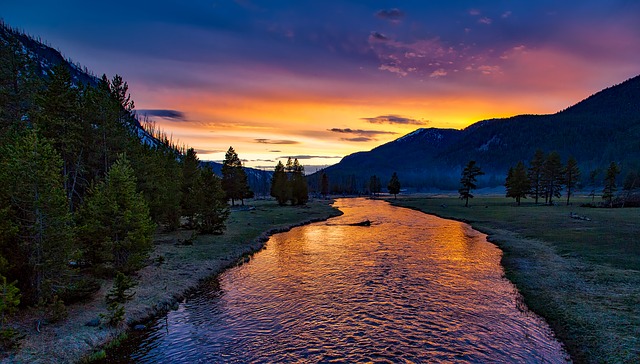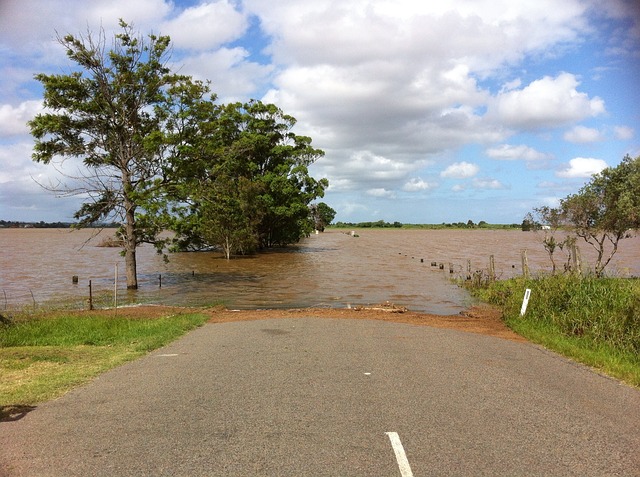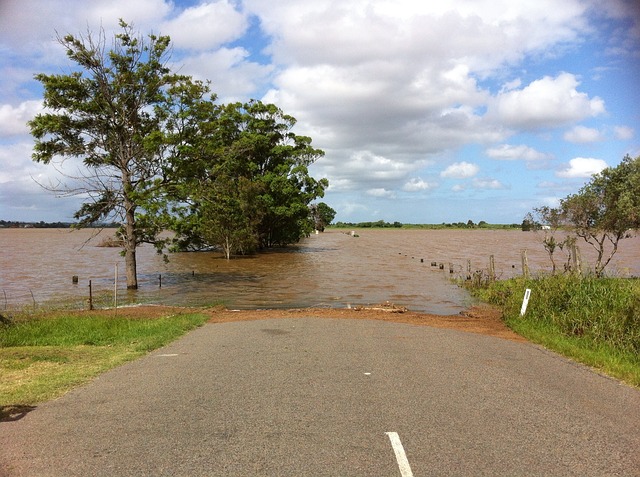We all know how dangerous flash floods are.
We know the the consequences for being caught off guard when a flash flood hits, and trust me if you don’t already know, it isn’t a pretty site (no pun intended).
However, I would like to help you avoid them from the very start.
I want to prevent you from encountering a flash flood while you’re out camping in the very first place so follows these tips seriously and you’ll never find yourself in the midst of disaster 😀
1. Check the forecast
The easiest way to avoid a flash flood encounter in the first place is by checking the weather forecast.
Check it for the week you’re going camping: before, during and after.
You’ll be surprised at how many people skip the simplest most important step only to go out on their trip and end up in a disaster.
2. Check often: multiple times a day
Go the extra mile and check the weather forecast multiple times a day.
We all know rainstorms can happen at anytime. A lot of the time they are unexpected and we’re only given a few hours notice before it hits.
Simply check it multiple times per day and you’ll ultimately avoid any encounters with a flash flood in the first place.
3. Evacuate Early
Trust the warnings, trust your gut, trust what you think is right because more than likely your gut instincts and the warning signs are all correct and you should take action asap
Don’t think a severe rainstorm is going to go around you or think you’ll be one of the lucky ones.
No, instead be smart and take action early, which means evacuate the campsite and get out before you can’t.
4. Don’t pitch your tent at the bottom of the hill
Pitching your tent at the bottom of a hill only exposes you to running water which may run into your tent and start leaking.
If you don’t have a tent with a bathtub floor, it has even MORE chance of leaking.
Not only that but bottom of hills is where water sits so you’ll be in the danger zone from the get go if you don’t know a rainstorm is coming.
5. Don’t pitch your tent in a ravine or ditch
This is the most dangerous place to pitch a tent in my opinion.
Sure, you’ll be safe from the wind and suns rays, however, ravines fill up quickly and if you’re in one and it’s the middle of the night, it will not end well.
Now you might tell me you’ll just check the weather often, but I’ll tell you it’s not hard for it to slip your mind for the entire day. Next thing you know disaster strikes.
6. Pitch Your Tent At The Top of a Hill
This will be the best option in the event you DO forget to check the weather forecast.
You’re safe from all flash floods because you’re obviously at the top of a hill, as rain water runs down hill.
Keep in mind that this is a bad place to stay if there’s going to be lightning which is why it’s crucial to know if it’s just a rainstorm or thunderstorm.
You may be avoiding one disaster but setting yourself up for a different one.
Here’s what to do in when camping in a thunderstorm.
7. Stay Away From Bodies of Water

You’ll get the best spot in the campsite, however, you’re only asking for a disaster to happen in this scenario.
Slow-moving water rises quickly in a flash flood AND they became raging rivers my friend.
Pitch your tent at least 200 feet away from bodies of water to avoid a flash flood encounter.
BONUS TIP

Do NOT, and I repeat do not drive into flooded waters.
It’s in the statistics my friend, death by flash floods are caused by people driving into flooded waters. They do not know how deep or how fast the water is moving.
You can lose control of your car in a few inches of water and it can float in less than 2 feet of water!
It is silly because it’s the most avoidable out of them all but causes the most deaths.
Instead of going around, turning back and whatnot, people just drive into the water and it turns deadly real quick.
Conclusion
In all honesty, the best thing you could do is to put these tips in action because it’s simply not worth risking your life for the “best spot in the campsite”.
Flash floods can, will and HAVE killed people and will continue to until people learn how dangerous they really are.
You know how to avoid a flash flood and I am confident enough that you will do the right thing and share with your friends and family.




Great article.
Thanks Tom!
Wow, this is a great article.
I’ve always wanted to go camping, but too scared of it. Your website has given me more understanding of how to enjoy and especially on how to be more prepared ex. with flood.
Great tips. Thank you for that.
Best regards,
Che
Hello Che Dau.
Always happy to help 🙂 It’s best to avoid a flash flood in the first place, and these tips will definitely help keep you safe.
You literally cannot go wrong if you follow what I’ve taught in this article.
Stay safe, friend.